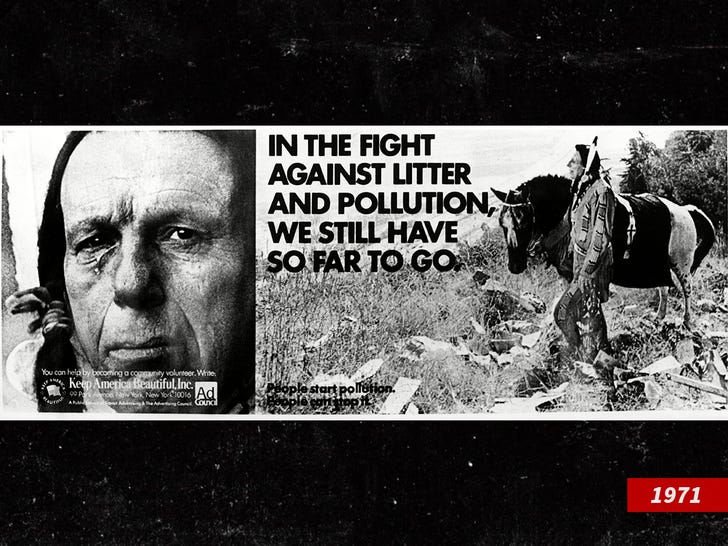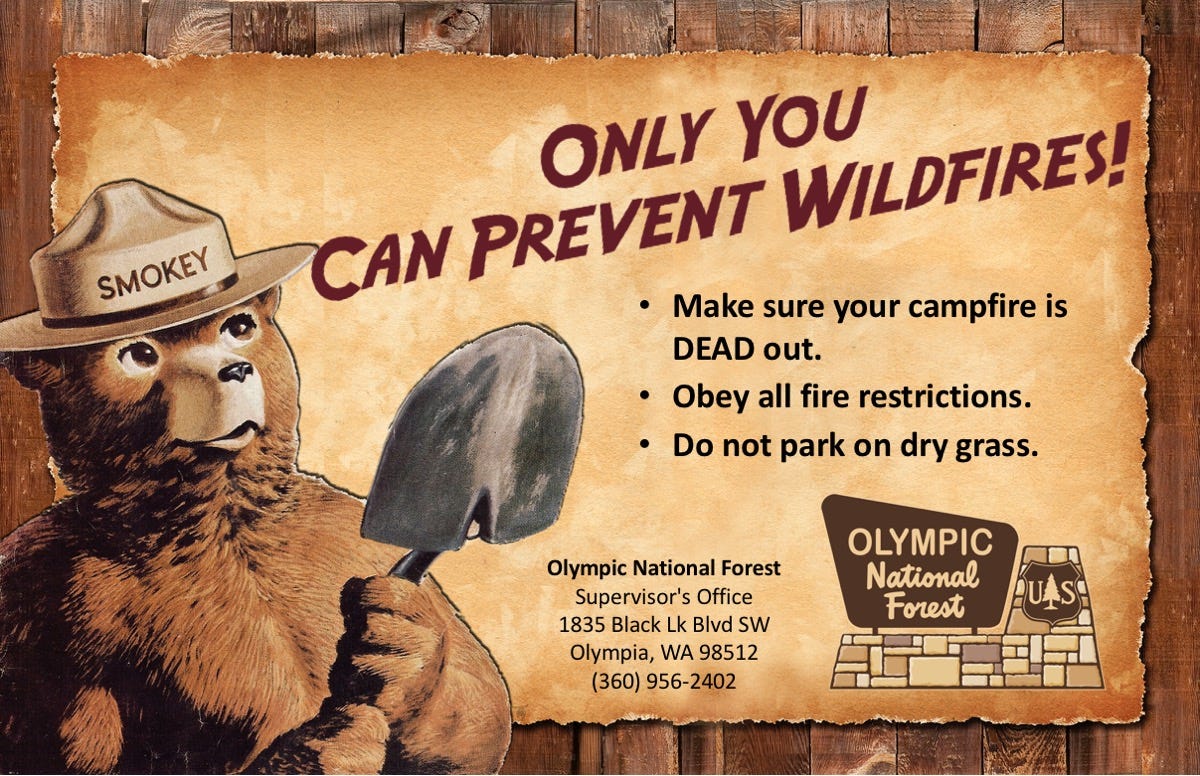Did Broadcast Public Service Advertising campaigns bring about change?
Why did some campaigns work and others didn’t?
This post primarily examines the public service advertising of American media landscape between the 1960s and the 1990s. Before the 1960s, public campaigns focused almost entirely on supporting the War effort – Rosie the Riveter, Victory Gardens, War bonds, and so on. However, the use of Public Service Announcements (PSAs) in the United States expanded from the 1960s through the 1990s, covering a wider range of issues and receiving more TV attention.
There has been a significant drop in encouraging change for the public good since the advent of the Internet. There was a time when public campaigns could be effective. With the internet and a fractured electorate that politicizes everything, national PSAs have gone the way of the Dodo.
Looking back at what worked and what didn’t with PSAs, we can identify successes and failures and try to reverse-engineer the causes for both.
Why the period from 1960 to 1990?
From 1960 to 1990, broadcast TV dominated the airwaves. The big three broadcasters (ABC, CBS, and NBC) ruled the media. During and after WWII, radio and film media provided PSAs on air and at the movies. After the War, the media landscape was changed as the War Advertising Council was changed to the Advertising Council which supplied new PSAs.
For many institutions, these ads raised both awareness and money. Television was broadcasting Ad Council campaigns for free. They raised awareness and a lot of money for non-profits like United Negro College Fund and the American Cancer Society. Television brought PSAs to a new audience of consumers.
There were a few public campaigns that seemed to work:
1) Smoking
For decades, tobacco companies dominated TV commercials until they were banned from airing in 1971. Many of the first major public service ads were aired to highlight the dangers of smoking and to remove its glamour.
The cigarette industry’s advertising dominated the airwaves, but numerous PSAs were describing the consequences and urging people not to smoke. The rate of announcements was such that there was one PSA broadcast for every three cigarette commercials.
The PSAs against smoking were the first public campaign that actually reduced our rates. For the first time ever, cigarette sales started trending downward.
2) Litter
Before the 1970s, throwing litter out of a car was just not a significant issue. Honestly. You see current images of "litter," and it is nothing compared to what it was before we made it objectionable. Throwing things out the window of a moving car was normal.
There had been periodic “don’t litter” campaigns, but they were not successful.
Littering on the roads changed only with the arrival of the “Crying Indian” ad. Today, it would be a joke or meme, but back then, with only a few TV stations, this ad was on constantly, and it was effective.
I am unsure how or if it affected adults, but I definitely remember that kids would complain when our parents did it in the car. It was one of the few complaints that made a difference because they were your kids, and there were few ways to justify it.
Then, when most people started changing, everyone else followed suit. You didn't want to be that one asshole who just threw garbage on the freeway. Yes, it still happens, but it is now less common and socially frowned upon.
3) Smokey the Bear & Wildfires
Smokey the Bear was created to remind campers to be careful and prevent forest fires. It was a simple, targeted campaign that drew attention to this issue. As a camper back then, I remember my granddad, HAM, always having me help him put out the fire before we left a site. After we extinguished the campfire, he would pour some water on it to make sure it was out.
4) Cigarette butts – Where it worked and where it didn’t.
After the success of the Smokey the Bear PSA in the West, Smokey helped launch a campaign to discourage people from tossing cigarette butts out of their cars, instead advising them to put them into the ashtray. This has effectively stopped, at least in the Western and wildfire-prone states. The tragic real-life consequences supported the public campaign. Whenever a fire was investigated and found to be caused by a discarded cigarette on the road, newspapers and TV would report this information.
It was another case where public opinion influenced actions with a few, and then group peer pressure took over.
In locations where fire wasn’t a threat, tossing cigarette butts out the window was the norm for decades longer.
5) Recycling
Recycling was introduced based on lessons learned from these two incidents. However, promoting recycling proved to be more difficult. While doing something good for the planet is generally popular, actual adoption often stalls when consumers have to put in effort or spend money. Years of PSAs about drunk driving failed to make an impact because they inconvenienced people. It was only after laws changed that drunk driving rates decreased.
Recycling supporters found that laws didn’t significantly help with implementation. However, another lesson from successful campaigns was that peer pressure can be effective. So, the recycling advocates distributed different physical bins for trash and recycling to each household. Seeing neighbors put out recycling bins made it a norm for others on the block to do the same.
Testing this behavior yourself is straightforward. Observe residential streets with various trash and recycling bins. You'll notice that adhering to the rules is simple, and peer pressure helps encourage recycling. Next, examine the multibin trash containers at a busy airport. Recycling there, in a public setting, requires effort to read all the options and properly sort your trash, often while rushing to catch a flight. Recycling is frequently overlooked in these areas. The two main lessons learned earlier were ignored: it isn’t easy, and there’s less peer pressure from strangers.
Failed Campaigns
There were many unsuccessful campaigns. These attempts to change people’s behavior ultimately failed mainly because some of the public had personal experience with drugs, guns, or masking.
When did PSAs stop working?
Broadcast Changes:
When examining why PSAs stopped being broadcast, we need to consider the media advertising landscape of that era. Before cable TV became widespread in the 1990s, broadcast television was the primary source of programming. They might have had unsold advertising slots, and stations could run promos for their other shows. They also had an incentive to run PSAs, as it was essentially “free” for the station to air a PSA instead of another promo for an established show. Additionally, airing PSAs helped the station when it was time to renew its broadcast license.
Once cable became widespread, it provided viewers with more options, and there was less unsold airtime. Infomercials aired, new TV channels broadcast all night, offering inexpensive advertising space, and cable technology allowed local businesses to promote themselves. Broadcasting Public Service Announcements now involved a cost to the station with little benefit for the station owners.
Cable also contributed to channel surfing, as viewers could easily switch between stations when they weren’t entertained. Stations had to run advertising, which might cause viewers to change channels, but they didn't have to air PSAs, which would also lead to channel surfing, so they chose not to.
Internet:
The Internet has gradually but profoundly changed the media landscape. Nonprofits can now buy smaller ads more often and target them to their websites. While it rarely works, payment is usually only made if the ad is effective.
Currently, there is almost no effective way to run a Public Service Advertisement online where the audience can respond if they agree or disagree. There are online debates about vaccine validity, along with various success stories for and against solar power, and nearly everything else.
The only somewhat effective approach is to use a social influencer, like a TikTok personality, to promote your causes. However, capitalism suggests that endorsing a product is more profitable than supporting a cause and is less likely to alienate your audience. If an influencer endorses support for either the Israeli or Palestinian cause, they risk losing subscribers. If they promote a poor perfume, people might complain, but they probably won’t lose their entire subscriber base.












Very informative and interesting. Thanks